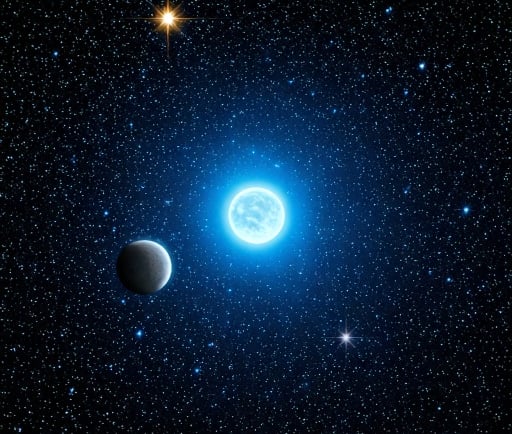Sirius: A Glimpse into the Brightest Star in Canis Major


Introduction to Sirius
Among the vast array of celestial bodies visible from Earth, Sirius stands out as a beacon of light. Known as the brightest star in the constellation Canis Major, Sirius has captivated astronomers and stargazers alike for centuries. This binary star system consists of two distinct components, with the more luminous star often taking center stage.
The Characteristics of Sirius
The primary component of Sirius, known as Sirius A, is a blue-white star that shines with an impressive luminosity—25.4 times greater than that of our own Sun. This remarkable brightness is not merely a result of its proximity to Earth; instead, it is a function of its intrinsic properties. Sirius A boasts a surface temperature exceeding 9,900 degrees Fahrenheit (about 5,500 degrees Celsius), which contributes to its vivid blue-white hue.
Understanding its Binary Nature
Sirius is classified as a binary star system, meaning it comprises two stars that orbit around a common center of mass. The companion star, known as Sirius B, is a white dwarf—a remnant that is the result of stellar evolution. This fascinating pairing provides critical insights into the life cycles of stars, showcasing the transition from a bright, massive star to a compact white dwarf. The proximity of these stars allows astronomers to study their interactions and evolution, presenting an invaluable opportunity to expand our understanding of the universe.
Due to its brightness and position in the night sky, Sirius has held a significant place in various cultures throughout history. It was revered by ancient civilizations, such as the Egyptians and Greeks, who associated it with important seasonal events and mythology. Today, Sirius continues to be a subject of interest in both amateur and professional astronomical circles, inspiring awe and curiosity as we delve deeper into the cosmos.
In conclusion, Sirius shines not only as the brightest star in the constellation Canis Major but also as an emblem of our quest for knowledge about the universe. Its binary nature, together with its dazzling brightness, makes Sirius a pivotal point of study in stellar astronomy. As we continue to observe and learn about such luminous objects, we unravel more of the mysteries that the universe holds.
